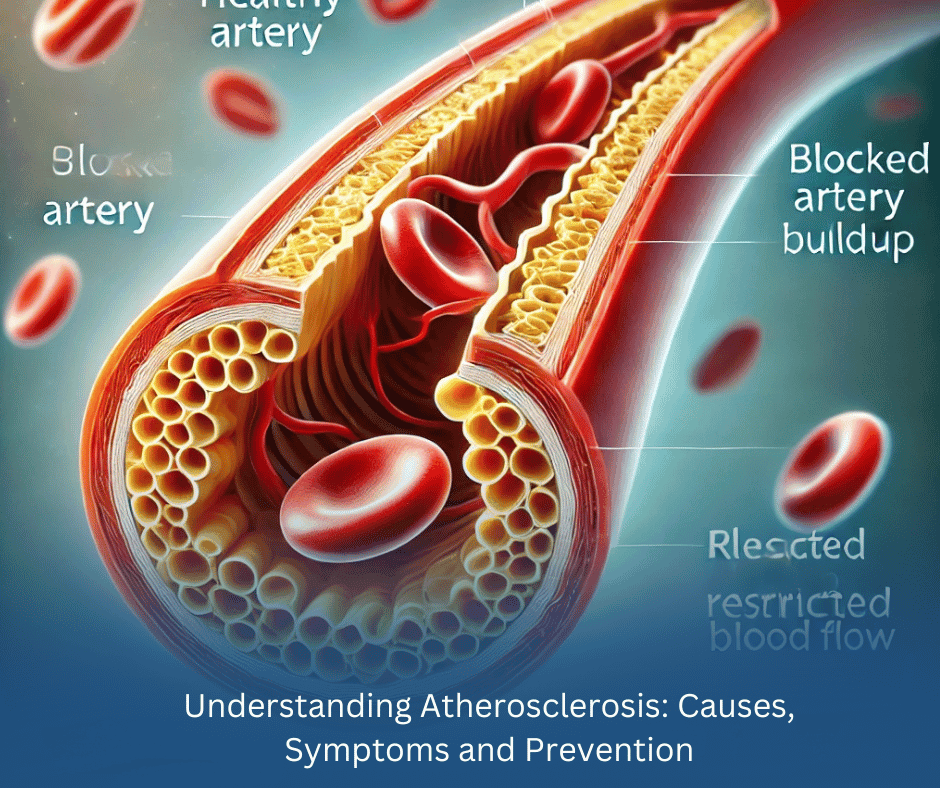Understanding Atherosclerosis: Causes, Symptoms and Prevention
The human heart is an incredible organ, tirelessly working to pump blood and supply oxygen and nutrients throughout our body 24/7. Unfortunately, heart disease remains one of the leading causes of death worldwide. One prominent type of heart disease is atherosclerosis. It’s crucial to be aware of this condition, its causes, symptoms, and more importantly, its prevention. Today, we will discuss atherosclerosis and how to keep our hearts healthy and strong.
We will explore the causes, symptoms, and prevention techniques of atherosclerosis in greater detail. Stay with us as we arm ourselves with important knowledge to guard our heart health and improve our quality of life. Remember, it’s never too late to start making positive changes and protect your heart from the risks of atherosclerosis.
Understanding Atherosclerosis: Causes, Symptoms, and Prevention
The Importance of Arterial Health
Our arteries play a vital role in our overall health, delivering oxygen-rich blood from our heart to cells and tissues throughout the body. When our arteries become compromised due to the build-up of plaque, our health risks go up significantly. Atherosclerosis is a leading cause of cardiovascular diseases such as heart attacks and strokes, and as such, it’s essential to understand the factors influencing the development of this condition.
Causes of Atherosclerosis
Atherosclerosis occurs when there’s a build-up of plaque along the walls of the arteries, causing them to narrow and stiffen. This build-up happens gradually, and several factors can contribute to the development of atherosclerosis.
1. High Cholesterol Levels: Having high levels of low-density lipoprotein (LDL) cholesterol, or “bad” cholesterol, increases your risk of plaque formation. Conversely, high levels of high-density lipoprotein (HDL) cholesterol, or “good” cholesterol, protect your arteries by helping remove excess LDL cholesterol.
2. High Blood Pressure: As blood flows through your arteries with more force than normal, it can create damage to the arterial walls, making them more susceptible to the accumulation of plaque.
3. Smoking: Tobacco smoke contains chemicals that can damage your arteries, causing the endothelial lining to become inflamed and more prone to plaque build-up.
4. Diabetes: Diabetes increases the risk of atherosclerosis as high blood sugar levels can damage the arterial walls and contribute to plaque development.
5. Obesity: Excess weight can lead to higher blood cholesterol levels and high blood pressure, both of which are risk factors for atherosclerosis.
6. Inactivity: A sedentary lifestyle has been linked to various health problems, including a higher risk of atherosclerosis.
7. Family History: If you have a family history of atherosclerosis or other heart conditions, it could increase your risk for developing the disease.
8. Age and Gender: Men tend to develop atherosclerosis at a younger age, while women’s risk increases after menopause.
Recognising Atherosclerosis Symptoms
Symptoms of atherosclerosis depend on which arteries are affected and can differ from person to person. In many cases, the disease progresses without noticeable symptoms until there’s a significant narrowing of the arteries or a severe blockage.
1. Heart-Related Symptoms: When atherosclerosis affects your coronary arteries, you may experience chest pain (angina), shortness of breath, fatigue, and a rapid heartbeat.
2. Brain-Related Symptoms: Atherosclerosis in the carotid arteries can lead to symptoms such as memory problems, confusion, dizziness, and weakness on one side of the body.
3. Extremity-Related Symptoms: Atherosclerosis affecting the peripheral arteries in the limbs can cause pain or cramping during walking or exercise, coldness or numbness, and sores or ulcers that do not heal quickly.
4. Kidney-Related Symptoms: If there’s a narrowing of the arteries leading to your kidneys, you may develop high blood pressure, reduced kidney function, and swelling of your legs or ankles.
Preventing Atherosclerosis
By controlling the risk factors associated with atherosclerosis, you can reduce your chances of developing this condition. Here are some suggestions to safeguard your heart health:
1. Follow a Heart-Healthy Diet: Consume a diet rich in whole grains, fruits, vegetables, lean protein, and healthy fats like omega-3 fatty acids found in fish and nuts. Limit your intake of saturated fat, trans fat, and cholesterol.
2. Exercise Regularly: Aim for at least 150 minutes of moderate-intensity aerobic exercise or 75 minutes of vigorous-intensity aerobic exercise each week, spread over at least three days.
3. Quit Smoking: If you smoke, quitting is one of the best decisions you can make for your arteries and overall health. Seek support from friends, family or healthcare professionals to help you quit.
4. Manage Stress: Chronic stress can contribute to high blood pressure and other heart risks. Incorporate stress-reducing techniques such as deep breathing exercises, yoga, meditation, or mindfulness practices into your daily routine.
5. Get Regular Checkups: Regular medical checkups can help monitor your blood pressure, cholesterol levels, and blood sugar levels, allowing you to take control of your health and prevent the onset of atherosclerosis.
Conclusion
Understanding atherosclerosis is crucial to protecting our heart health. Pay close attention to the risk factors and take the necessary steps to prevent this disease. A healthier lifestyle can make a significant difference in lowering your risk and enabling you to enjoy a longer more fulfilling life.
Don’t hesitate to take the first step towards better heart health. Schedule a consultation with the best cardiologist in Navi Mumbai at Heartwise today.









Comments are closed